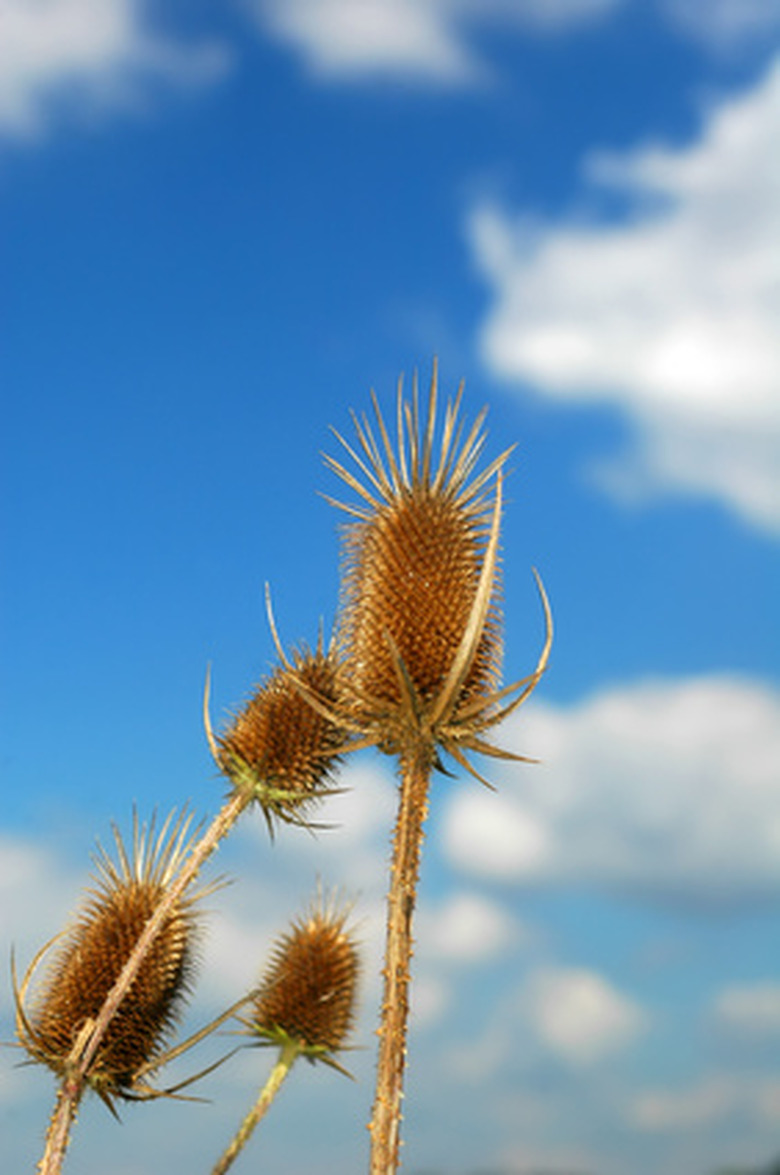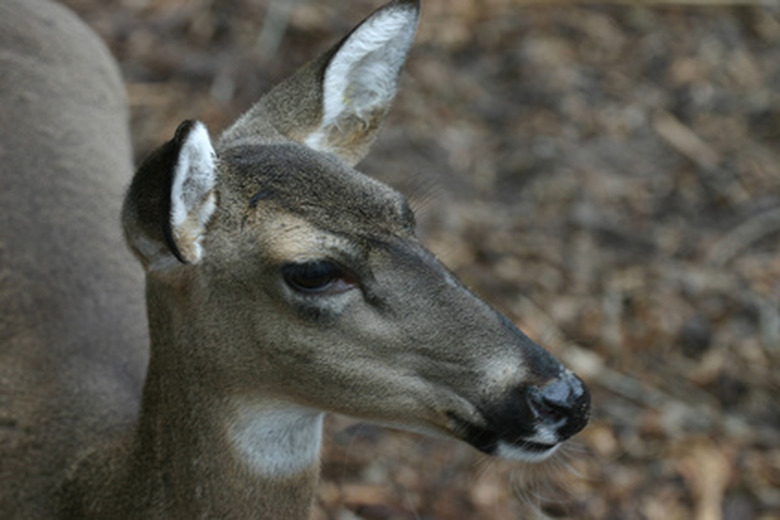Bull Thistle Facts
The bull thistle (Cirsium vulgare) is a spiny biennial weed found in pastures, along roadsides and croplands across the United States. The plant grows 2 to 7 feet in height in a rosette form. The foliage is spiny. The bull thistle is native to Europe, Asia and Africa. The weed was introduced to the United States in the early 1800s when the seeds were accidentally transported in crop seeds into the country.
Seeds
Bull thistle blooms in July through August during the second year of the plant's life. Each flower head measures approximately 2 inches. The flower heads quickly form hundreds of seeds. The seeds are dispersed by the wind. Each seed can remain viable for a decade.
- The bull thistle (Cirsium vulgare) is a spiny biennial weed found in pastures, along roadsides and croplands across the United States.
- Each seed can remain viable for a decade.
Livestock
Bull thistle easily invades grazing land and crowds out the nutritious food supplies for grazing animals. Most animals do not care for the bitter taste of the bull thistle and will not consume it. There are exceptions, however. Deer will readily consume the bull thistle. Hummingbirds also adore the bull thistle flower heads. The American Goldfinch and Junco enjoy feasting on the seeds of the bull thistle.
Control
Spray the bull thistle in the first year using either glyphosate, triclopyr or metsulfuron. Follow the directions on the herbicide's label for application. Cut the flower heads off the bull thistle during the second year to prevent the seeds from developing. Promptly dispose of the flower heads. Pull the bull thistle out of the ground wearing a pair of gloves to protect your hands from the spines. Make sure to remove the tap root at least 2 inches below the soil to prevent regrowth. Mow the flower heads and young thistles to the ground immediately before seed production can occur.
- Bull thistle easily invades grazing land and crowds out the nutritious food supplies for grazing animals.
- Make sure to remove the tap root at least 2 inches below the soil to prevent regrowth.
Weevil Control
Weevils have been introduced with limited success to try to control the bull thistle. Both the thistlehead feeding weevil and rosette feeding weevil will consume the bull thistle with limited success.
Location
Bull thistles prefer to grow in sunny locations. The plants can easily tolerate moist or dry soil conditions. Overgrazed pasture land is extremely vulnerable to invasion from the bull thistle. Areas of clear cut forests also often become infested with bull thistle because the lack of tree cover and disturbed soil offer an ideal location for the seeds to take root and flourish.


